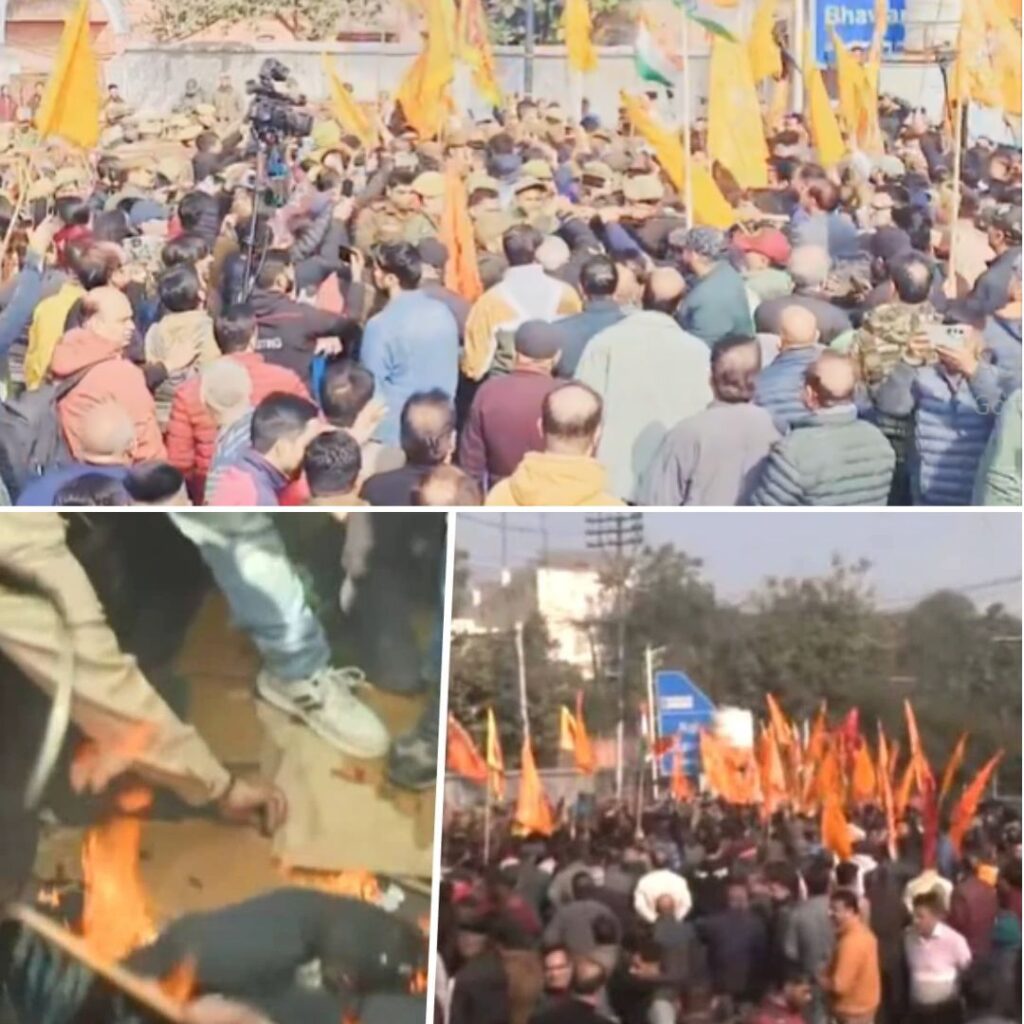Haryana Chief Minister Manohar Lal Khattar on Thursday, August 15, announced an insurance cover of Rs 10 lakh for sewer workers associated with government agencies in the state.
सफाई कर्मचारियों की सुविधा का हम ध्यान रख रहे है, हमने घोषणा की है कि सफाई कर्मचारी या सीवरेज का काम करने वाला कोई कर्मचारी उसकी काम करते हुए दुर्भाग्यवश मृत्यु हो जाती है तो उसको 10 लाख का बीमा मिलेगा और सरकार उसका प्रीमियम भरेगी।
— Manohar Lal (@mlkhattar) August 15, 2019
“The government will pay for the policy, and in case of an accident resulting in loss of life, the amount will be paid to the family of the sanitation worker,” CM Khattar said.
“The scheme is only applicable to sewer workers working under or associated with the government. It will not apply to those employed by private agencies,” Khattar added.
Sewage Deaths In State
On June 26, four workers died after inhaling poisonous gases while cleaning a septic tank in Haryana’s Rohtak. The incident occurred when the workers entered the tank to clean it.
Out of the four workers, three were privately hired, and one was from the Public Health Department.
In a similar incident in May 2019, two workers died after inhaling harmful gases while cleaning a sewer tank in Sonepat. The bodies of the two workers were recovered after two and a half hours.
In Gurugram alone, ten workers lost their lives in the last two years while cleaning sewers.
Data collected by the National Commission for Safai Karamcharis (NCSK) shows that at least 50 workers have died cleaning sewers in the first six months of 2019.
This data is a gross underestimate and includes figures for only eight states — Uttar Pradesh, Haryana, Delhi, Punjab, Gujarat, Maharashtra, Karnataka and Tamil Nadu.
Toothless Law?
The Prohibition of Employment as Manual Scavengers and their Rehabilitation Act, 2013, bans anyone employing human beings in the cleaning of sewers. However, the practice continues to find takers and exist on the ground.
The act does not address critical aspects of provisions of those who were liberated from manual scavenging before the law was passed in 2013.
In most cases, the workers are not given proper safety gear, helmet, oxygen mask and bodysuits, which add to their brutal atrocities.
Robots Remain Ineffective
Despite the Harayana Government’s efforts to promote the use of robots for cleaning sewers and drains, many workers are still forced to enter the drains for cleaning. In many cases, workers lose their lives.
While interacting with some sanitation workers in a Public Works Department event on August 15, Khattar said: “Even though we are launching robots and mechanising the cleaning of sewers, we have launched the insurance scheme to cover untoward expenses in exceptional cases.”
Some Innovative Steps
There have been about 15 innovations across the country to replace manual scavenging.
The Hyderabad Metropolitan Water Supply and Sewerage Board is using 70 mini jetting machines that can access narrow lanes and smaller colonies to clear the choked sewer pipes.
In Thiruvananthapuram, a group of engineers have designed a spider-shaped robot that can clean manholes and sewers.
Haryana Govt’s Initiatives
Since the last two years, many workers have staged protest against the state government not fulfilling their demands.
One of the most crucial demands was the funds for bodysuits and uniforms for workers.
To reduce exploitation by contractors, Khattar has advised the sanitation workers to choose a contractor with consensus from their groups democratically. The government would then award the contract to that elected person.
“The workers can identify one educated person from among themselves and elect him as the contractor. The government can talk to the workers through these members,” Khattar said.
Also Read: No More Heavy Schoolbags? Rajasthan Govt To Compile Four Subjects In One Book











